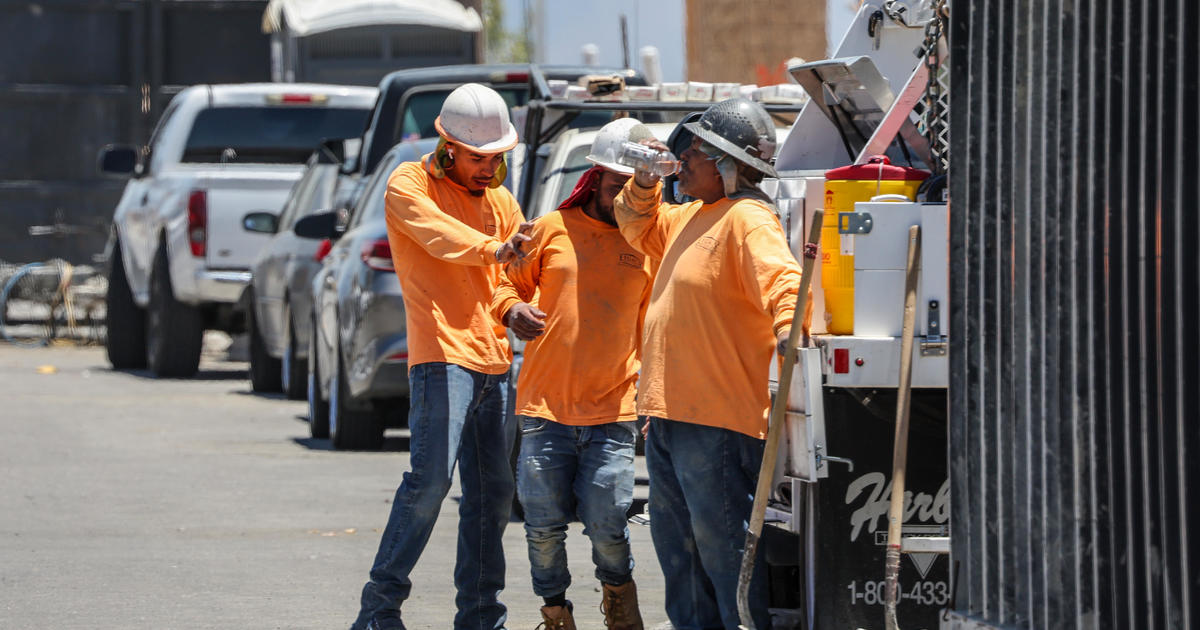
Employers would have to take steps to protect workers from extreme heat under a rule proposed by the Biden Administration on Tuesday.
In what would be the first major regulation of its kind, the new rule would add safeguards for workers nationwide, requiring employer training to identify heat hazards and provide “rest breaks, access to shade and water and heat acclimatization for new employees,” the White House said in a news release.

Those affected by excessive heat at work include farmworkers, delivery and construction workers, landscapers as well as those who earn a living in warehouses, factories and kitchens.
Under the proposal by the Department of Labor’s Occupational Safety and Health Administration (OSHA), the agency would adopt two heat index thresholds nationally, factoring in both humidity and temperature.
“If finalized, OSHA projects the rule would affect approximately 36 million workers and substantially reduce heat injuries, illnesses and deaths in the workplace,” according to the statement.
At 80 degrees Fahrenheit, employers would have to provide drinking water and break areas. At 90 degrees, workers would have mandatory 15-minute breaks every two hours and be monitored for signs of heat illness.
As average temperatures rise, heat illness is a growing safety and health concern for workers around the globe, including in the U.S. There were an average of 32 heat-related workplace deaths a year from 1992 to 2019, according to the U.S. Bureau of Labor Statistics. There were 43 such fatalities in 2022, up from 36 the year before. That said, statistics for occupational heat-related illnesses, injuries and deaths are likely “vast underestimates,” according to the agency.
The fatalities include a 26-year-old man who suffered fatal heat-related injuries while working in an open sugar cane field in Belle Glade, Florida, as the heat index hit 97 degrees, the DOL said in April, citing a contractor for not protecting the worker.
“This young man’s life ended on his first day on the job because his employer did not fulfill its duty to protect employees from heat exposure, a known and increasingly dangerous hazard,” Condell Eastmond, OSHA’s area director in Fort Lauderdale, stated of the September death.
Extreme heat is more deadly than hurricanes, floods and tornadoes combined, killing more than 2,300 people across the U.S. last year, including 350 in New York City. Experts warn that heat stress can turn deadly even sooner than previously thought.
According to a recent report by Public Citizen, as many as 2,000 workers die of heat stroke, kidney failure and heat-induced cardiac arrest each year in the U.S. from laboring in extreme heat, and 170,000 are injured.
Five states — California, Colorado, Minnesota, Oregon and Washington — have workplace heat safety laws.
“The smattering of heat protection rules is inadequate, leaving the vast majority of workers in the U.S. in 45 states without any protection from dangerously high heat on the job,” stated Juley Fulcher, a worker health and safety advocate with Public Citizen.
The Labor Department has been developing a standard for how workplaces deal with heat since 2021, with OSHA holding a meeting in 2023 to hear about how its proposal could impact small businesses.
Heat protection laws in the U.S. have faced steady industry opposition, including from chambers of commerce and other business associations. Many say a blanket mandate would be difficult to implement across such a wide range of industries.
Some regulations have recently come under attack by the GOP. Over the past year, Florida and Texas, led by Gov. Ron DeSantis and Gov. Greg Abbott, both Republicans, passed legislation preventing local governments from requiring heat protections for outdoor workers.
—The Associated Press contributed to this report.








